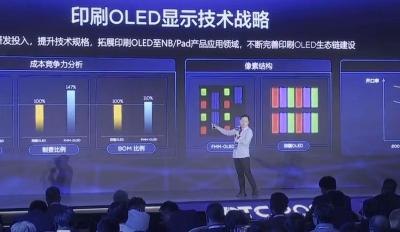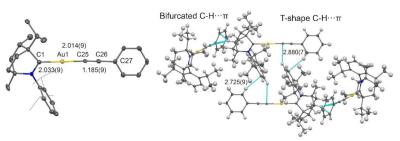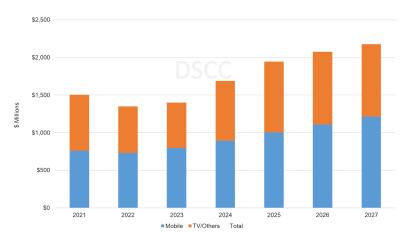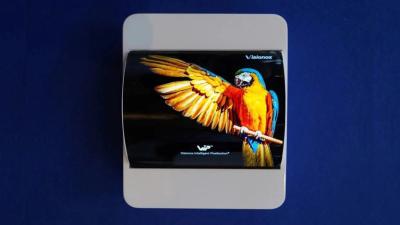OLED Lifetime: introduction and market status - Page 3
TCL CSoT reiterates plans to start producing inkjet printing OLEDs in 2024, to target IT displays
TCL CSoT says that it will start producing OLED displays using an inkjet printing process in the second half of 2024. This is excellent news and good to know CSoT is still on track for initial production in 2024. The company says it will first target the IT and medical sector.
The company says that the cost of producing OLEDs using its inkjet printed panels will be lower compared to the currently-used FMM based method, and its OLEDs will offer superior performance (in lifetime, mostly) as its process enables higher aperture.
UBI: Samsung to delay the introduction its first blue phosphorescent AMOLEDs to the second half of 2025
Universal Display is progressing with its blue PHOLED material, and earlier this month the company said it is on track to introduce the new material commercially in 2024. During a company seminar, UBI's Daejeong Yoon updated that according to their latest information, Samsung Display has decided to adopt a blue phosphorescence material in the second half of 2025 - a year later than expected.
Samsung is calling the new material stack B1, and it says that the new stack will increase the efficiency of its OLED device by more than 65% (which seems to be rather too much, maybe it means 65% of the power consumption of the current stack). UBI says that the blue OLED still suffers from low lifetime - the lifetime of the blue PHOLED stack is only 55% of the lifetime of its current fluorescence-blue stack, but regardless of that the company will introduce it commercially due to the power consumption efficiency.
LG Display starts producing 17" tandem foldable laptop OLED displays
LG Display announced that it has started to mass produce 17" 2560x1920 foldable OLED laptop displays. LGD applied a tandem stack architecture, to increase the lifetime of the OLED displays, to make it suitable for the demands of laptop use.
It is likely that the recently announced HP Spectre Foldable PC uses LG's new panels.
Researchers develop promising near-UV CMAc OLED emitters
Researchers from the University of Manchester, led by Prof. Alexander Romanov, developed a promising new Carbene-Gold-Arylacetylide (CMAc) OLED near UV emitter type. The researchers also detail a strategy to develop longer device lifetimes for such emitters.
The new emitter exhibits an efficiency of 1% EQE, and a lifetime of 20 minutes at a practical brightness of 10 nits (LT50). This is low compared to commercial OLEDs - but it is actually quite outstanding for such an emitter, and the researchers say that this is among the longest lifetimes for a near UV-OLED at a practical brightness ever reported. In addition, organic fluorescent and TADF emitters rarely exceed 1% EQE at practical brightness.
Researchers find that adding an ultra-thin metal layer can dramatically enhance the lifetime of tandem OLED devices
Researchers from South China University of Technology and Guangzhou New Vision Opto-Electronic have found that the lifetime and current efficiency of a tandem OLED device can be greatly improved by adding an ultra-thin Ytterbium (Yb) metal layer through the charge generation layer (CGL).
The experiments detail an ultra-thin Yb metal layer with low work function, high transmittance, and large atomic radii, added to a light-green tandem OLED devices. The new device exhibited a lifetime of 308 hours (T90) at an initial brightness of 10,000 cd/m2 - which is 362 times (!) longer than that of a similar device without the Yb layer (T90 = 0.85 hours). The lifetime of the same material in a single-layer configuration (not a tandem device) was 49 hours (T90).
DSCC: the AMOLED material market to resume growth in 2023, to reach $2.18 billion in 2027
DSCC expects the AMOLED stack material market to grow 4% in 2023, to $1.4 billion, and to reach $2.18 billion in 2027, that's a 12% CAGR from 2023 to 2027. In 2022, the market declined by 10%. The forecast does not include any UDC revenues from blue PHOLED materials, which means that if UDC succeeds in commercializing its blue material, revenues could be higher by hundreds of millions of dollars.
DSCC says that demand for OLED TVs will continue to decline in 2023. In 2022, revenues of OLED TV revenues declined by 17%, and in 2023 revenues will decline 3% further. Growth will resume, though, in 2024, and in 2023-2027 the market will grow at a CAGR of 13%.
Excyton wins an I-Zone innovation award at SID Display Week 2023, concludes a successful event
UK-based Excyton has won an I-Zone innovation award at SID Display Week 2023, a great testimonial to the interest in the display industry for its novel OLED and microLED pixel architectures.
Excyton concludes a very successful display week. The company's CEO, Peter Levermore, gave a presentation explaining the company's TurboLED display architecture, detailing how the technology works and the simulations the company has performed. The company also had a booth at Display Week's I-ZONE section, where it demonstrated red, green and blue TurboLED devices powered by both deep-color and light-color emitters. In fact the company says that its demonstration attracted a lot of interest from the industry, and it had many constructive meetings during the week that it is following up on to start commercial collaborations in the near future.
Researchers reach 100% IQE with a single-layer TADF device, getting closer to commercial viability
A few months ago we reported on research conducted at Germany's Max Planck Institute, led by Prof. Paul W.M. Blom, that looks into single-layer OLED devices. In such devices, a single TADF OLED emitter layer is sandwiched between two electrode - a much simpler design compared to commercial OLED devices that use multilayer stacks, sometimes with 10 or more layers.
The researchers the the MPI say that in fact it is possible to develop highly efficient OLEDs with just the TADF emitter, as there's no fundamental reason or major benefits that arise from multilayer OLEDs. The researchers continue their work, and now they have developed a new single-layer blue OLED in which every injected electron is converted into a photon - or 100% IQE. This is the first time that such a single-layer OLED device was demonstrated (see image above).
Visionox new ViP OLED technology uses photolithography-based patterning to increase display performance
Visionox is introducing a new OLED production technology, called Visionox Intelligent Pixelization (or ViP for short) that enables higher-density display production, at over 1,700 PPI.
The idea behind ViP is to replace the fine metal mask (FMM) method with photolithography-based pixel patterning. The process offers several advantages, mainly the increase of aperture ratio to almost 70% (Visionox says the currently reach 69%). FMM methods usually achieve up to 30%, which means that brightness, efficiency and lifetime can all be increased.
LG Display and Samsung Display are both working on special glass-TFE OLEDs for Apple's future iPads
Apple's interest in OLED displays for future iPad tablet device is not secret, and many analysts estimate that the first such device will be released in 2024.
One of Apple's requirement is for superior performance for its tablets compared to smartphone AMOLED displays - and so developers are relying on a tandem OLED structure. According to a new report from Korea, LG Display is developing another unique technology for Apple's iPads.
Pagination
- Previous page
- Page 3
- Next page










